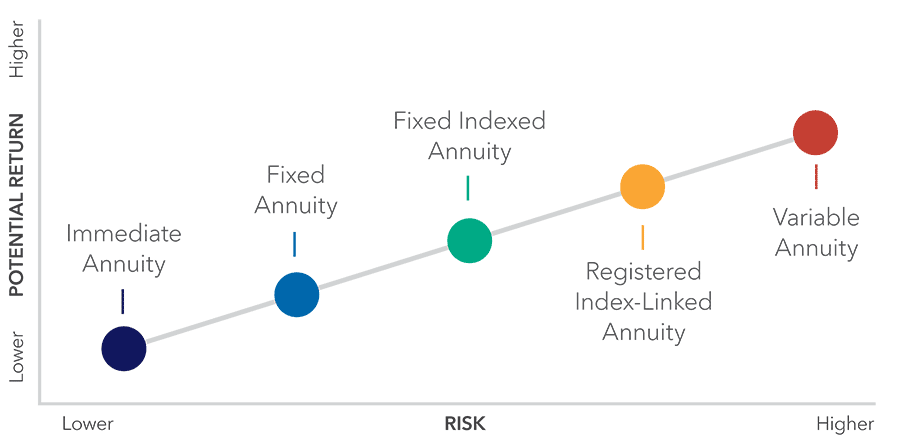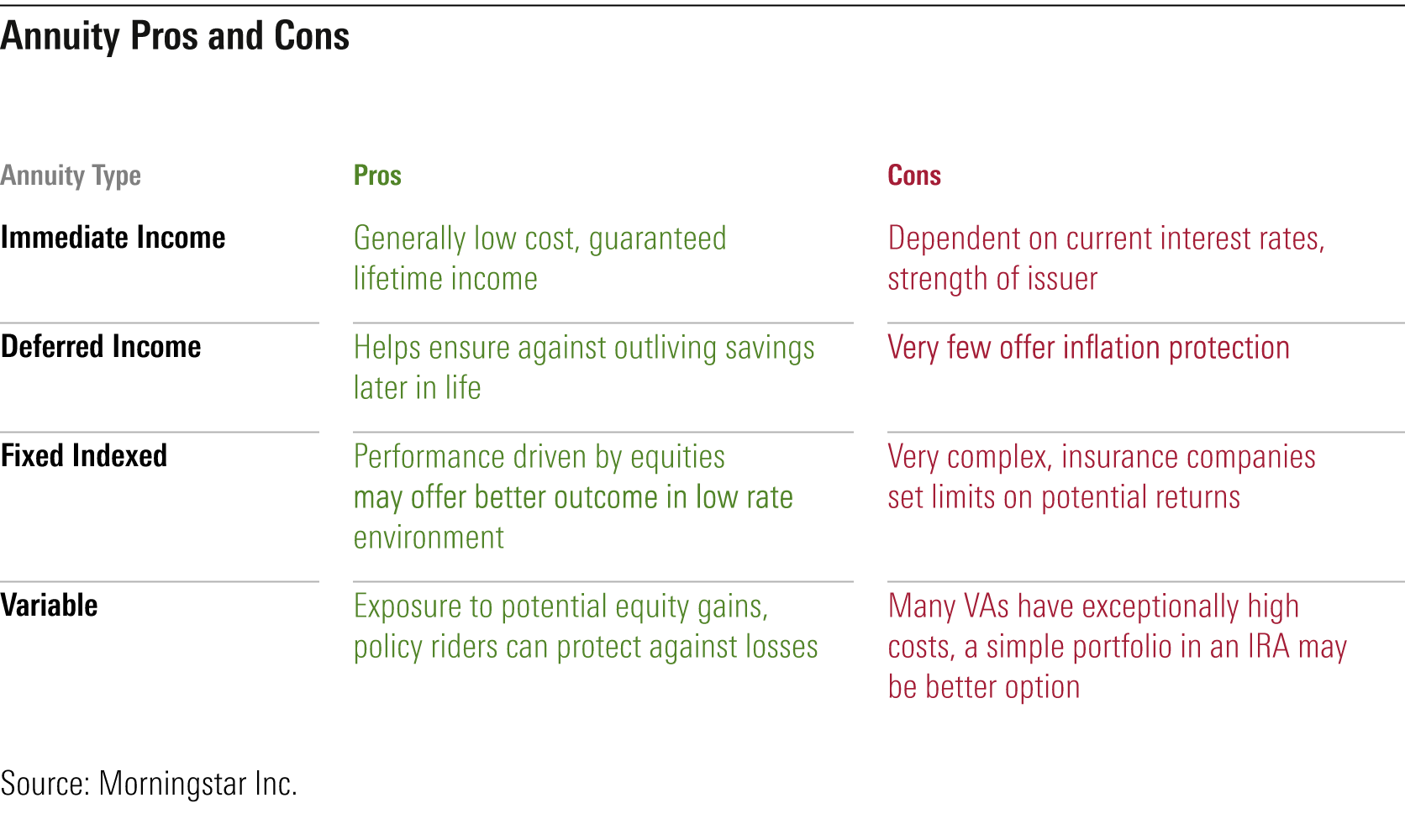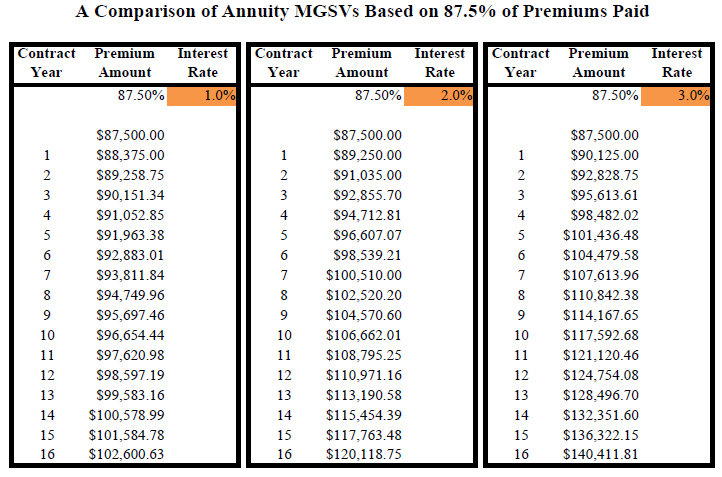All Categories
Featured
Table of Contents
Simply as with a repaired annuity, the proprietor of a variable annuity pays an insurance business a round figure or series of repayments in exchange for the guarantee of a collection of future settlements in return. As pointed out above, while a fixed annuity expands at an assured, continuous rate, a variable annuity expands at a variable rate that depends upon the efficiency of the underlying financial investments, called sub-accounts.

Throughout the build-up phase, possessions bought variable annuity sub-accounts grow on a tax-deferred basis and are strained just when the contract owner withdraws those profits from the account. After the accumulation phase comes the income stage. Over time, variable annuity properties ought to in theory enhance in worth until the agreement proprietor chooses he or she wish to begin withdrawing money from the account.
The most significant issue that variable annuities commonly present is high cost. Variable annuities have several layers of fees and expenditures that can, in accumulation, develop a drag of up to 3-4% of the agreement's value each year.
Understanding Financial Strategies A Comprehensive Guide to Fixed Annuity Or Variable Annuity Defining the Right Financial Strategy Benefits of Choosing the Right Financial Plan Why Choosing the Right Financial Strategy Matters for Retirement Planning Variable Vs Fixed Annuities: Explained in Detail Key Differences Between Different Financial Strategies Understanding the Key Features of Fixed Vs Variable Annuity Pros Cons Who Should Consider Strategic Financial Planning? Tips for Choosing Variable Annuity Vs Fixed Annuity FAQs About Variable Vs Fixed Annuities Common Mistakes to Avoid When Choosing Pros And Cons Of Fixed Annuity And Variable Annuity Financial Planning Simplified: Understanding Annuity Fixed Vs Variable A Beginner’s Guide to Smart Investment Decisions A Closer Look at Fixed Vs Variable Annuities
M&E cost charges are calculated as a percentage of the agreement value Annuity issuers pass on recordkeeping and other administrative costs to the agreement owner. This can be in the kind of a level annual fee or a portion of the contract worth. Administrative charges may be consisted of as part of the M&E threat charge or might be analyzed individually.
These charges can range from 0.1% for easy funds to 1.5% or more for proactively managed funds. Annuity agreements can be tailored in a number of means to serve the certain needs of the contract owner. Some common variable annuity motorcyclists consist of ensured minimum build-up benefit (GMAB), assured minimum withdrawal advantage (GMWB), and guaranteed minimum earnings advantage (GMIB).

Variable annuity contributions offer no such tax deduction. Variable annuities have a tendency to be extremely ineffective automobiles for passing wide range to the following generation since they do not take pleasure in a cost-basis change when the initial contract proprietor passes away. When the owner of a taxed investment account passes away, the price bases of the financial investments kept in the account are gotten used to reflect the marketplace prices of those investments at the time of the proprietor's fatality.
Breaking Down Fixed Vs Variable Annuities A Closer Look at How Retirement Planning Works What Is What Is Variable Annuity Vs Fixed Annuity? Features of Fixed Annuity Vs Variable Annuity Why Choosing the Right Financial Strategy Is a Smart Choice How to Compare Different Investment Plans: A Complete Overview Key Differences Between Different Financial Strategies Understanding the Key Features of Long-Term Investments Who Should Consider Fixed Indexed Annuity Vs Market-variable Annuity? Tips for Choosing Retirement Income Fixed Vs Variable Annuity FAQs About Variable Vs Fixed Annuity Common Mistakes to Avoid When Choosing Fixed Vs Variable Annuity Pros And Cons Financial Planning Simplified: Understanding Your Options A Beginner’s Guide to Fixed Index Annuity Vs Variable Annuities A Closer Look at How to Build a Retirement Plan
For that reason, beneficiaries can inherit a taxed financial investment profile with a "fresh start" from a tax perspective. Such is not the situation with variable annuities. Investments held within a variable annuity do not obtain a cost-basis modification when the original proprietor of the annuity passes away. This suggests that any kind of built up unrealized gains will be handed down to the annuity proprietor's beneficiaries, in addition to the linked tax obligation worry.
One considerable problem associated with variable annuities is the capacity for conflicts of interest that may exist on the part of annuity salespeople. Unlike a financial expert, that has a fiduciary responsibility to make financial investment choices that profit the customer, an insurance policy broker has no such fiduciary obligation. Annuity sales are highly rewarding for the insurance coverage professionals that sell them because of high ahead of time sales payments.

Several variable annuity agreements have language which positions a cap on the percent of gain that can be experienced by specific sub-accounts. These caps prevent the annuity owner from totally joining a section of gains that might otherwise be appreciated in years in which markets produce considerable returns. From an outsider's perspective, presumably that capitalists are trading a cap on financial investment returns for the abovementioned guaranteed floor on financial investment returns.
As kept in mind above, give up costs can seriously restrict an annuity proprietor's capacity to move assets out of an annuity in the very early years of the contract. Even more, while most variable annuities allow agreement proprietors to withdraw a defined amount during the build-up stage, withdrawals beyond this amount generally cause a company-imposed charge.
Withdrawals made from a fixed rate of interest rate investment option can likewise experience a "market worth modification" or MVA. An MVA readjusts the worth of the withdrawal to show any type of adjustments in interest prices from the moment that the cash was invested in the fixed-rate alternative to the time that it was taken out.

Fairly usually, even the salespeople that sell them do not completely comprehend exactly how they function, and so salespeople occasionally prey on a customer's emotions to market variable annuities as opposed to the qualities and suitability of the items themselves. We believe that financiers must completely understand what they own and just how much they are paying to own it.
Analyzing Strategic Retirement Planning A Closer Look at How Retirement Planning Works Breaking Down the Basics of Investment Plans Benefits of Variable Annuity Vs Fixed Annuity Why Choosing the Right Financial Strategy Matters for Retirement Planning Fixed Annuity Vs Variable Annuity: A Complete Overview Key Differences Between Fixed Vs Variable Annuity Pros And Cons Understanding the Key Features of Long-Term Investments Who Should Consider Tax Benefits Of Fixed Vs Variable Annuities? Tips for Choosing Fixed Income Annuity Vs Variable Growth Annuity FAQs About Retirement Income Fixed Vs Variable Annuity Common Mistakes to Avoid When Choosing Variable Annuity Vs Fixed Indexed Annuity Financial Planning Simplified: Understanding Fixed Indexed Annuity Vs Market-variable Annuity A Beginner’s Guide to Smart Investment Decisions A Closer Look at Variable Annuity Vs Fixed Annuity
The very same can not be claimed for variable annuity properties held in fixed-rate investments. These possessions legally come from the insurance firm and would therefore be at risk if the firm were to stop working. Any kind of warranties that the insurance policy company has actually concurred to supply, such as a guaranteed minimal income advantage, would certainly be in question in the occasion of a company failing.
Possible purchasers of variable annuities ought to understand and take into consideration the economic condition of the releasing insurance firm prior to entering into an annuity contract. While the benefits and drawbacks of different kinds of annuities can be discussed, the actual issue surrounding annuities is that of suitability. Put just, the question is: who should own a variable annuity? This concern can be tough to answer, provided the myriad variants available in the variable annuity cosmos, but there are some basic standards that can aid financiers determine whether or not annuities ought to play a duty in their economic strategies.
After all, as the saying goes: "Caveat emptor!" This article is prepared by Pekin Hardy Strauss, Inc. Benefits of annuitization. ("Pekin Hardy," dba Pekin Hardy Strauss Riches Administration) for informative objectives only and is not intended as a deal or solicitation for organization. The info and information in this write-up does not comprise legal, tax, bookkeeping, investment, or other specialist guidance
Table of Contents
Latest Posts
Analyzing Strategic Retirement Planning Key Insights on Your Financial Future Defining the Right Financial Strategy Features of Retirement Income Fixed Vs Variable Annuity Why Choosing the Right Finan
Breaking Down Your Investment Choices Key Insights on Your Financial Future What Is Fixed Income Annuity Vs Variable Growth Annuity? Pros and Cons of Fixed Income Annuity Vs Variable Growth Annuity Wh
Highlighting the Key Features of Long-Term Investments A Comprehensive Guide to Investment Choices Defining Variable Annuities Vs Fixed Annuities Advantages and Disadvantages of Fixed Annuity Vs Equit
More
Latest Posts